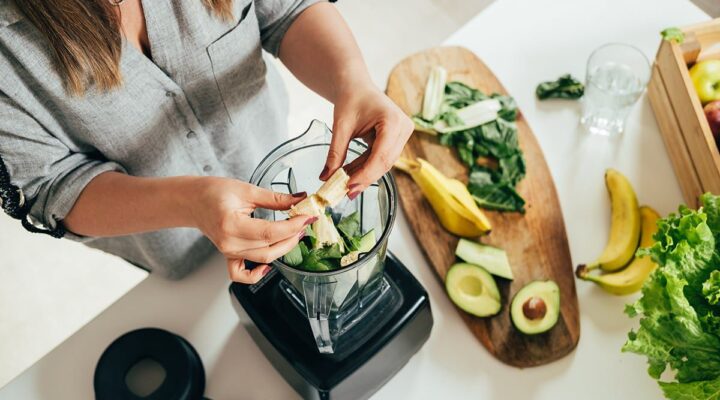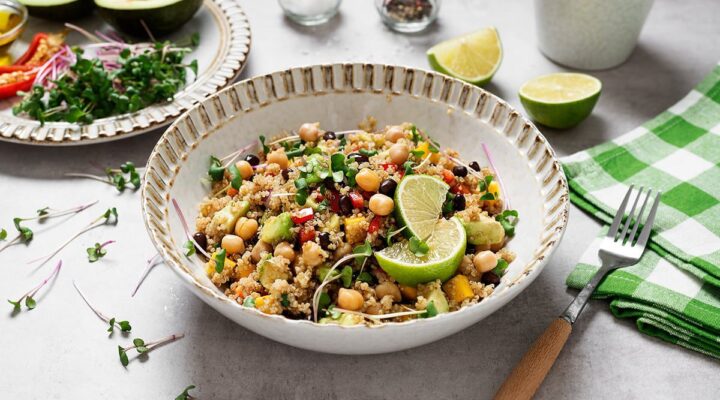How Calisthenics Can Help You To Reach Your Strength Goals This Year
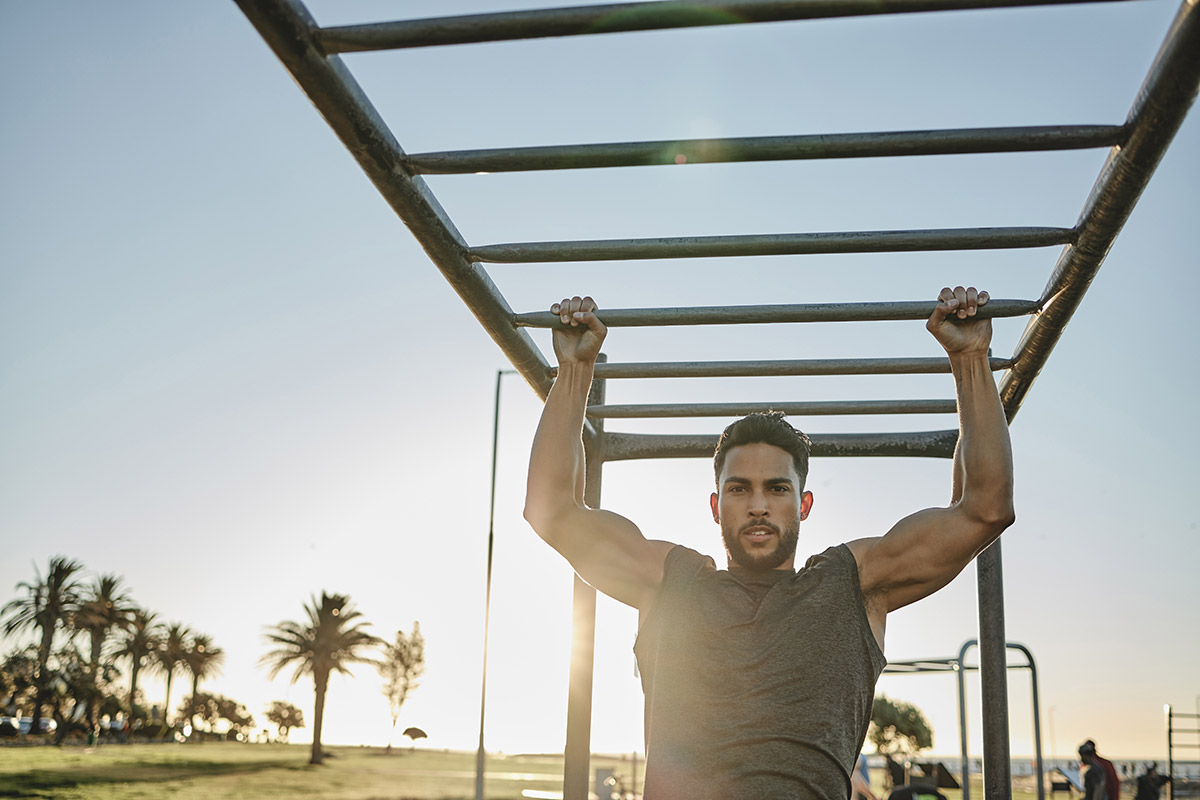
Of all the fitness disciplines out there, calisthenics can feel like one of the most intimidating. Just the mere mention of the word conjures up visions of ripped gym-goers in the park, defying gravity while hanging horizontally from a pull-up bar.
But if you’re relatively new to the method, don’t let the whittled six-packs and sculpted shoulders put you off exploring this impressive form of fitness. Calisthenics classes are surprisingly accessible to people of all workout levels, and you don’t need to be an Olympic-level gymnast to get started, either.
What’s more, the practice has some pretty incredible benefits for people of all ages, helping to build strength, mobility, explosive power and control. The other big draw of bodyweight training? It’s completely functional and equipment-free, meaning you can practice anytime and anywhere.
Calisthenics has taken off in recent years thanks to influencers like Frank Medrano (@frank_medrano) and Malin Malle (@malinmallejansson), who have earned legions of fans on social media with their athletic skills.
But if you’re unsure on exactly what it is and how it delivers a blistering workout, we spoke to Lucy Joslin, a senior calisthenics and mobility instructor at BLOK, to find out everything you need to know.
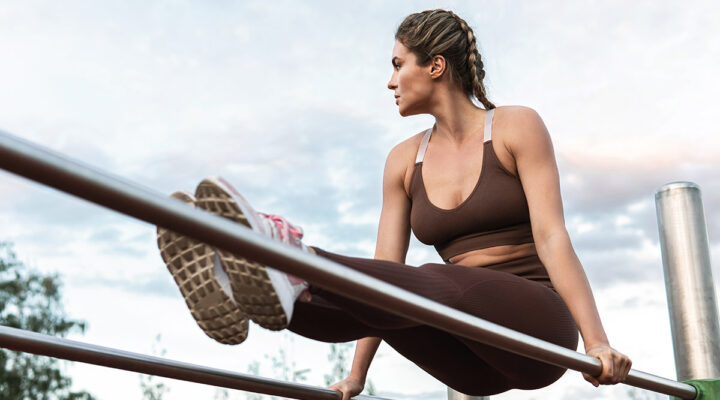
First up, what is calisthenics?
Calisthenics is a type of fitness training that uses your bodyweight as resistance to perform various movements and exercises. As a category of strength training, it focuses on building lean muscle, endurance, and flexibility, without the need for any special equipment or weights (although some people progress their skills with parallel bars and gymnastics rings).
The word ‘calisthenics’ translates to ‘beautiful strength’, and is derived from the Greek words ‘kallos’ which means beauty, and ‘sthenos’ which means strength.
Calisthenics training usually involves rhythmically drilling through movements like push-ups, lunges, dips and planks to build ox-like strength. The exercises can range from simple beginner movements like squats that don’t require any equipment to advanced full-body movements such as muscle-ups – where you hoist your body to a straight-armed position over a bar.
Over time, these exercises are modified and progressed so you’re constantly challenging yourself out of your comfort zone.
Run me through the benefits
There’s a reason why people in the calisthenics community have some of the best physiques in the game. Utilising your own bodyweight for resistance can burn fat and develop lean and functional muscle throughout your entire body.
When people use free weights in the gym, they often focus on working one muscle group at a time, building bigger biceps or sinewy thighs. In calisthenics, you’re moving your body in a variety of ways, off a linear plane, to challenge pretty much every muscle going.
“The key thing is that calisthenics uses compound movements, rather than isolated exercises like bicep curls,” explains Joslin. “A muscle-up, meanwhile, uses lots of muscles at the same time. Although it’s a full-body practice, calisthenics leans more towards upper-body strength, so there’s a lot of back, shoulders, chest and core strengthening exercises.
“As a woman in my 40s, [Calisthenics] has got me stronger than I’ve ever been,” Joslin continues. “I’ve done everything from ‘legs, bums and tums’ in the Nineties to Pilates, and calisthenics has helped me to get in the best shape of my life. As a woman, it’s empowering to be able to lift your own body weight.”
As we age, our body’s growth hormone and testosterone production decreases. These hormones play a crucial role in maintaining muscle mass and strength. Joslin stresses how important resistance training is as we age, as it “offsets the risk of osteoporosis” and “strengthens the muscles around the bone” against sarcopenia – a type of age-related muscle loss. Many calisthenics exercises are high-intensity too and can help improve your cardiovascular health by increasing your heart rate and strengthening your heart.
Scroll through the calisthenics hashtag on TikTok and you’ll notice one thing – many exercises involve balancing on one leg or using your core muscles to stabalise you in a hanging pose. Practising these movements regularly can help improve your balance and coordination, which can serve you well in other disciplines like running, boxing, dance and football.
Fitness isn’t a one-size-fits-all concept, and the industry is moving away from the trend of training with one repetitive, calorie-blitzing method. Instead, taking a more varied workout approach, exploring various movement practices, challenges our bodies in dynamic ways to build full-body strength and mobility.
And if one of your yearly goals is to improve your flexibility, calisthenics can help to get you there too. “Some of my students are in their 60s and 70s, proving that anyone can join at any age,” stresses Joslin. “If you can’t do pull-ups, you’ll learn the pathway and exercises to get you there – and it’s really addictive to watch the progress.”
Joslin also points out that the discipline is a good gateway into strength training with weights, as there’s a “lower risk of injury with bodyweight training”. Plus, it’s completely free. Once you have the basics of form and safety down, many calisthenics converts practice the skill at home or using community apparatus in local parks.
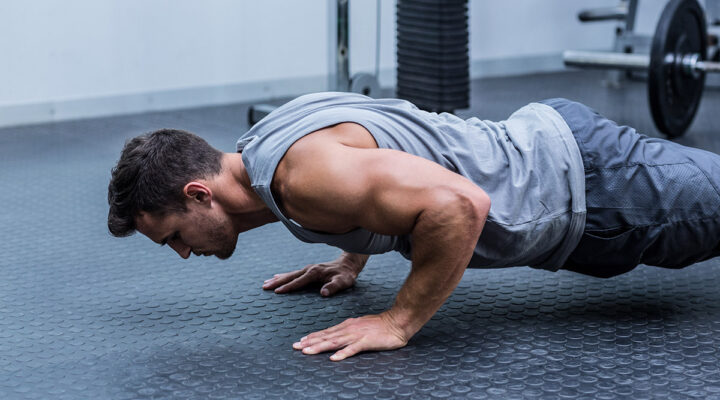
How can I get started in calisthenics?
There are lots of free guides and YouTube series that teach you the basics of calisthenics, but Joslin recommends looking for a local class so you can learn the correct technique from a qualified instructor.
“Unlike HIIT classes, Calisthenics has more of a workshop atmosphere so there’s lots of time and space to really learn from the instructor and try different movements,” she says. “This one-to-one training can really help if you’re nervous about coming to class for the first time.”
Joslin, who is part of a diversity-driving community called Cali Kulture, is passionate about making calisthenics a safe space for people of all identities, genders, ages and backgrounds. “The more people we can encourage into the Calisthenics, the more diverse the community will be.”
She adds that classes often have an encouraging, community atmosphere, so it’s a great place to throw yourself in and meet new people too: “Because there’s such a social, relaxed environment, you inevitably end up chatting to people in class. It can be a real motivator to keep coming back each week. Many people find that calisthenics becomes a hobby and part of their lifestyle, rather than just a gym class.”
Once you’ve booked into a class, Joslin stresses that before attempting a calisthenics workout, it’s important to activate the muscles with a good warm-up to avoid pain or injury. It’s also worth arriving ten minutes early to familiarise yourself with the space and the instructor.
Finally, consistency is key. Joslin advises establishing a regular workout routine and setting yourself goals. Whether you want to nail a pistol squat, improve your endurance, or get off the ground in a planche, setting goals will help you stay motivated.
“Seeing progress is addictive in calisthenics,” she admits. “Once you’ve nailed one skill, you’ll likely be eager to keep learning and advancing.”



